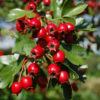Green Earth Skin Salve “Cure for all”
By Simone McConnie BSc Pod Med (UK)(Podiatrist)
This combination of the cure for all leaf, wonder world, cerrassee, bees wax and vit e oil has been a hit with some of my patients.
I was first introduced to this product when I was pregnant with my first child, when I was given a natural insect repellant in a small kit which also had this product called cure for all. I inquired the usage of this product and noted it to be good for just about any skin disorders. After reading the ingredients and noting them to be natural, I proceeded to use it on my children for minor things when they were babies, like little heat rashes around the neck and in the elbow arm area, behind the ears etc. It does have a subtly strong odor that takes getting used to but when weighed against its usage that was minor. I thought nothing much of it, until my husband got quite a nasty burn on his hand and we did the usual icing, etc for the first day and the second day there was a large blister in the most inappropriate place. I thought why not give the “cure for all” now renamed green earth skin salve a try. With in 24 hours the blister was gone and the area started to peel but when it peeled it was practically healed. No nasty scar, no redness and soreness as would be expected. We gained a new respect for this product.
I wanted to find a way of using this product in my practice, as if it was so good for healing my husbands’ hand maybe it would be useful on some of the things I see, and I discussed it with Ms Le May. She noted there should be no reason why I could not use it on wounds and other such disorders.
At the time I was having a challenge with one of my patients who had a poorly managed venous ulcer which took up the majority of her leg, it was very painful and the products I wanted to use on it were not available on the island (out of stock). In desperation I turned to the green earth skin salve. I explained to my patient it was not a trialed product but how it worked for my husband and in her anxiety to get her wound healed agreed to use it and see how it goes, or at least until the product we were waiting for became available in the island.
I did a spot trial on a small area to see how it responds and it was a great response. It was a granulating (part of the healing process of the wound) area about to start into the process epithelialisation ( the final phase that is seen once the skin form a dry pink area that then becomes pigmented over a year or less). That went well. I then decided to use it on a sloughy (a less healed are usually a yellow fleshy area sometimes taking on a dark pigment) area not yet starting the granulation process yet, it seemed to have helped with the desloughing process a little but then it became very inflamed and I stopped using it on such an area. I continued to use it on the epithelised area.
Wound care points
Granulation tissue is typically deep pink or red and is characterized by an irregular granular surface that resembles raspberries
New epithelial tissue is light pink or slightly lavender and dry; in full-thickness wounds, new epithelial tissue migrates from the wound edges to gradually cover the granulation tissue
A common complication of chronic wounds is epibole (premature closure of the wound edges), which prevents epithelialization and wound closure.
Open wound edges are characterized by a narrow border of flat, moist, red tissue that separates the surrounding skin; this represents the reproductive epithelium.
With a venous ulcer which is sometimes called a life sore (chronic wound) in Barbados because of the difficulty with circulation hence the difficulty to heal and the problems associated with epibol or the area can epithelise and very easily break down again. It was noted that continued use on these areas helped it to the final phase and it remained healed. To date this lady is still using it on the healed areas to assist with the right moisture control and nourishment to the skin. The healing process was facilitated with the use of several other treatments and dressings in the area.
Her ulcer started off at and is now (as of February 2008)
See photos.
It is understandable that for wound care where there is a lot of work done across the world for various products to assist with healing and speeding up the different phases of the process a lot of studies will be needed in order to accept this as a wound care product. But for the time being it works very well as a skin moisturizer. Further extensive studies will be needed.
References
Doughty D.B, Advances in skin and wound care, Wound Assessment: Tips and Techniques; Sept 2004.
February 2008

